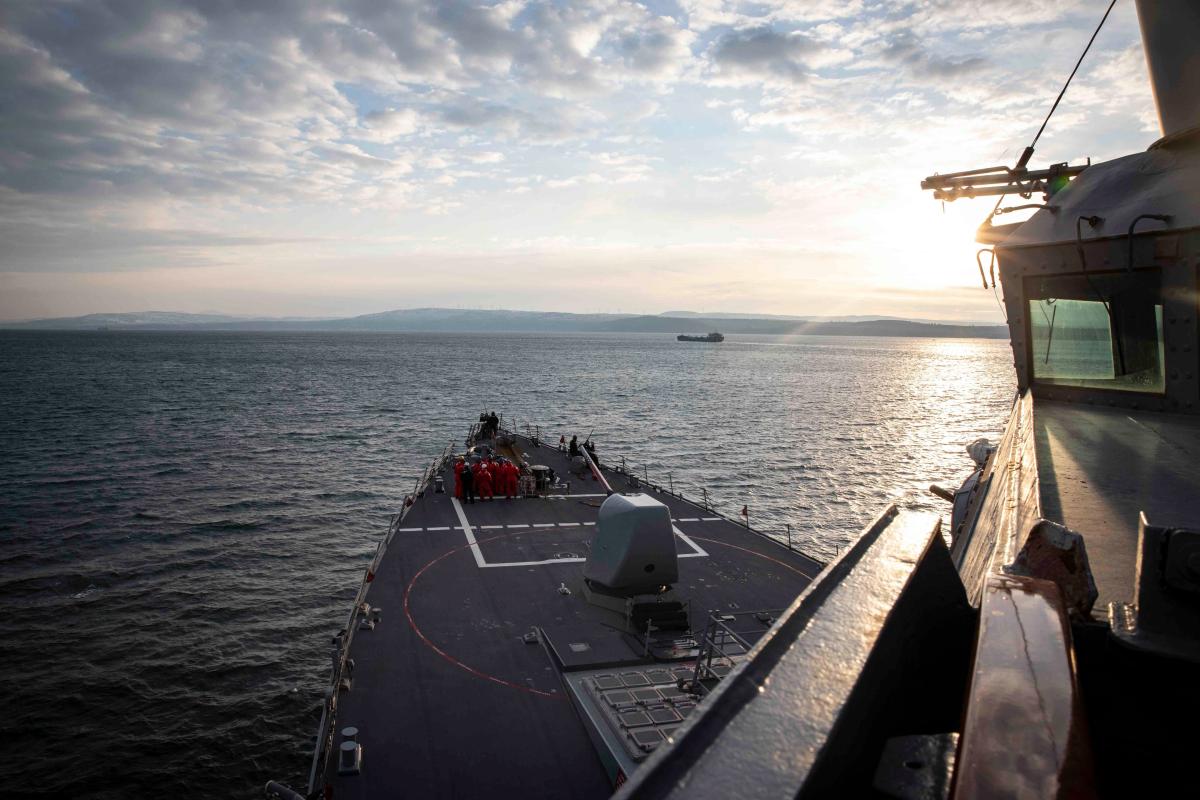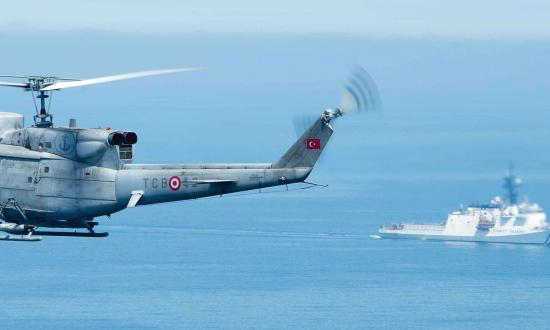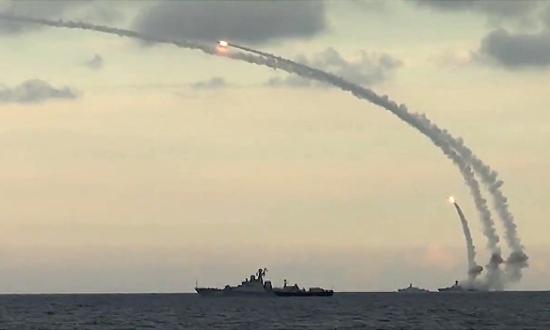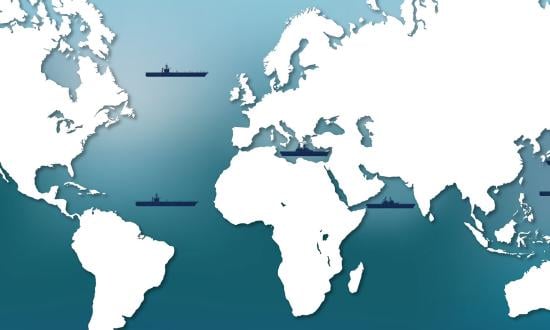On 27 February 2022, the Foreign Minister of Turkey announced that Turkey would legally recognize the Russian invasion of Ukraine as a “war,” thereby enabling Turkey to close the Turkish Straits (Dardanelles and Bosporus) to the passage of Russian warships under the terms of the Montreux Convention Regarding the Regime of the Straits. Some half-dozen Russian warships had transited the Turkish Straits into the Black Sea earlier in February. There has been no announcement of a Russian warship seeking to make a transit into the Black Sea since the Turkish Foreign Ministry announcement, so Turkey has not been put into the position of having to officially refuse permission. The Turkish announcement made it clear that any Russian warship wishing to exit the Black Sea and return to their home fleet would be allowed to do so.
The Montreux Convention, signed in 1936 by representatives of Australia, Bulgaria, France, Greece, Japan, Romania, Yugoslavia, Turkey, United Kingdom, and the Soviet Union, gives Turkey the right to restrict access to the Straits under specific circumstances.1 In brief:
- Turkey has the right to close the Straits to all foreign warships in time of war or when Turkey feels threatened.
- Merchant ships are free to transit, but Turkey has the right to restrict merchant ships of nations at war with Turkey.
- Capital ships of non–Black Sea nations are prohibited.2
- Other non–Black Sea nation warships are subject to limitations in terms of number of ships, size of armament, and aggregate tonnage. No ship with displacement greater than 15,000 tons is permitted.
- Non–Black Sea nations are further restricted in the number and aggregate tonnage of their warships allowed in the Black Sea at any given time. The limitation is 45,000 tons, no more than 30,000 tons of which may belong to any one nation.
- They are further restricted in terms of the length of time they may remain in the Black Sea (no more than 21 days).
- Warships must declare their intention to transit (northbound or southbound). Non-Black Sea nations must provide 15 days’ notice; Black Sea powers must give 8 days.
- Submarines belonging to non–Black Sea nations are not permitted.
- Black Sea nation submarines may transit only if either newly built and en route their permanent base or en route to/from repair. They must transit singly and on the surface and take no more than two days to complete the transit.
- Black Sea nation warships may exit the Black Sea en route home bases outside the Black Sea without restriction (in application, applicable only to Russia).
- Transit of aircraft carriers into the Black Sea is not specifically prohibited in the body of the Convention. But the 15,000-ton limitation imposed on non–Black Sea nation warships effectively precludes their transit. Russia evades the issue by referring to their aircraft carriers as “aircraft carrying cruisers.” Turkey has chosen not to challenge this designation.
Turkey and its Black Sea neighbors justifiably regard the wording of the Montreux Convention as highly advantageous to them. Turkey has been very careful in administering the provisions of the convention. Although it was signed for a period of twenty years and thus could have been renounced by any signatory beginning in 1956, no signatory has seen any advantage in doing so. The convention has worked well.
In particular, Turkey would not wish to see any significant changes made. Thus, even though the Foreign Ministry announcement of 27 February probably will not result in any Russian warship being denied transit into the Black Sea, Turkey’s exercise of its rights to close the Straits to warships of a nation at war (Russia invading Ukraine) was a courageous move and one which will not endear Turkey in the eyes of Vladimir Putin.
1. The United States is not a signatory to the Montreux Convention
2. The Montreux Convention specifically excludes aircraft carriers from the definition of “capital ships.”






